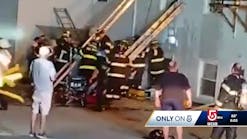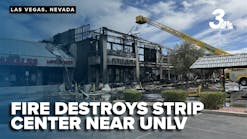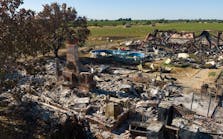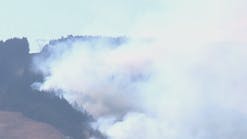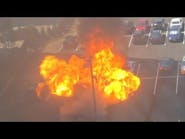FHWorld17: Preparing for and Managing Mayday Situations
As a chief officer, what do you do when things “go sideways” on the fireground? In their Monday Firehouse World session, Assistant Chief Derek Alkonis and Deputy Chief John Tripp, both with the County of Los Angeles Fire Department, tried to answer this question by outlining protocols for mayday situations, including what firefighters can do to help prevent these incidents in the first place. Both chiefs have been in the seat of command during maydays, giving them a unique perspective on the complexity of these events.
Preparations and adjustments
Tripp offered that the key to managing maydays is to build the potential for them into your plan even before anything goes wrong. Both Tripp and Alkonis underscored the importance of gathering intel and considering fire dynamics to help inform the decision-making process on the fireground. Further, Alkonis explained that standardization of operations is extremely beneficial, so that all crews know how to handle the event, regardless of who’s on shift or what part of town the incident happens in. And much of this standardization comes through training. “Once you start training, it reduces the panic,” Alkonis added.
Related to training, Tripp pointed out that most of the props firefighters use are based on real-life situations in which a life was threatened, underscoring the importance of realistic training. “It’s the same thing on the command side,” he said. “Where can we go to be a student of the game? FirefighterCloseCalls, for one. Listen to the tapes. That will help you, just like the props.”
Tripp and Alkonis also addressed how incident priorities can reduce the likelihood of mayday events—and some of this requires an adjustment in thinking. “When we go from a life priority to a property priority, we as commanders need to consciously consider our tactics,” Tripp said. “Do we go defensive? Sometimes that decision needs to be made quickly.”
Before delving into the protocols themselves, Tripp addressed the culture of calling maydays. “Do we call early enough?” he asked. The answer: No, as ego or pride often gets in the way. He said the reality is that by the time a firefighter has called a mayday, it’s likely that they have already tried to self-rescue—and time is in short supply. “So when we do get the mayday, it’s incumbent upon us to go quick,” he said.
Step-by-step mayday procedures
The protocols presented are based primarily on the IAFF Fire Ground Survival Program, which applies the lessons learned from firefighter fatality investigations conducted by NIOSH, with the ultimate goal of ensuring consistent mayday prevention and training for all firefighters, company officers and chief officers.
Pre-mayday
Alkonis outlined nine pre-mayday responsibilities of the incident commander:
- Command post positioning
- Ensure appropriate levels of resource staged
- Identify geographical references (e.g., side A) to ensure everyone has the same reference points
- Accountability tracking system functional
- Appropriate medical resources on scene
- Assign RIC resources
- Assign command officer to RIC group supervisor
- Request additional RIC resources
- Establish a communications plan—Dispatchers are mayday trained. Uninterrupted contact with firefighter. Officer will be on tactical and command
Alkonis reiterated that when it comes to assigning RIC resources, it’s important to do it EARLY. This helps set the stage for a successful rescue should a firefighter emergency arise on the fireground.
During the mayday
When it comes to the mayday itself, Tripp underscores that the word “mayday” is the hailing term for a firefighter emergency—and everything else is considered “emergency traffic.”
Alkonis then went through the several critical steps/responsibilities for the IC, all of which are designed to assist the fallen firefighter:
- Receive mayday from the firefighter
- Control communication on radio channel
- Listen to radio to identify firefighter
- Contact not established with firefighter?
- Deploy RIC
- Repeat mayday call back to distressed firefighter
- Mayday notification to all resources and dispatch
- Additional resources and frequency requested
- Resources to maintain current assignments and switch frequency
- Expand ICS to accommodate mayday
- Obtain PAR from each unit assigned to the operational area (hot zone)
- Maintain suppression efforts
- Expand command support team
- Obtain follow-up reports on the RIC rescue efforts
- Reevaluate incident action plan (IAP)
- Terminate mayday
An important point to remember is that the above steps are part of an overall plan that is meant to create order in chaos. “Freak out is not a plan,” Alkonis said. At that point, listening is key. “We want to know the who, what and where—and the where should be last because that’s the critical information,” he added. Even if the officer isn’t able to hear the name or what happened exactly, knowing the “where” is vital to taking the necessary steps to mitigate the situation.
After the mayday
There are additional responsibilities for the IC following a mayday, after the rescue is complete and operations are returning to normal:
- Return incident communications to normal operations
- Re-define incident priorities
- Ensure fresh crews available
- Utilize PIO
- Determine need for investigation team
- Assess need for critical incident stress debriefing
- Direct post-incident review
Alkonis added that, in the long term, after an exhaustive review, the department can make decisions on where improvements are needed and then develop training programs to distribute to the rest of the field.
Final note
Mayday situations are directly impacted by risk vs. reward considerations. “Risk has a first name and a last name,” Tripp said. “Risk has a family. Risk has kids.” He emphasized that officers must always remember this when making critical decisions about whether to put their crews in an IDLH environment. Fortunately, he said, “Everyone can help on a mayday if they do what—their job,” and this involves being an advocate for crew safety and looking out for your people.

Janelle Foskett
Janelle Foskett served as editorial director of Firehouse Magazine and Firehouse.com, overseeing the editorial operations for the print edition along with working closely with the Web team.


